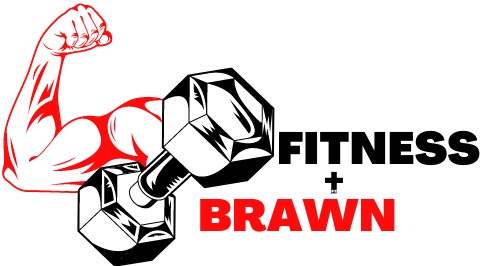There are a lot of debates in the fitness world, but perhaps one of the most hotly contested is the battle between pushups and pull-ups.
Both exercises are fantastic for you, but which one is better?
Pull-ups and pushups are similar in that they target the same muscle groups but differ in how you execute them. Pull-ups are an upper-body pulling movement that targets the lats and biceps, whereas pushups are an upper-body pressing activity that focuses on the chest, shoulders, and triceps.
In this blog post, we will break down the benefits of each exercise and help you decide which one is right for you.
What are Pull-ups?
Pull-ups are one of the most popular exercises and for a good reason. They're a great way to build upper body strength and can be done anywhere. But what exactly are pull-ups?
Pull-ups are a type of exercise that works your back and shoulder muscles. To do a pull-up, you'll need to find something to grip – a bar, a tree branch, or even a door frame. Then, pull yourself up until your chin is above the bar. Lower yourself back down, and repeat.
Pull-ups are a compound exercise, meaning they work for multiple muscle groups simultaneously. In addition to your back and shoulder muscles, pull-ups also target your biceps and forearm muscles.
What are Pushups?
Like pull-ups, pushups are a popular bodyweight exercise that can be done anywhere.
Pull-ups are sure to give you a great workout, whatever you choose. There are many different variations of pull-ups, so you can always mix things up to keep your muscles challenged. You can try different grip positions or add weight to increase the difficulty.
Pushups are a type of exercise that works your chest, shoulder, and triceps muscles. To do a pushup, start in a plank position with your hands placed shoulder-width apart. Lower yourself down until your chest nearly touches the ground, then push back up to the starting position. Repeat for as many reps as you can.
Pushups are a compound exercise, meaning they target multiple muscle groups at the same time. In addition to your chest, shoulder, and triceps muscles, pushups also work your core muscles.
What are the benefits of pull-ups?
Pull-ups are a great way to tone your upper body and build strength. They work your back, shoulders, arms, and core, making them a great all-around exercise. Plus, they can be done anywhere with no equipment required. However, pull-ups can be challenging, especially if you're new to them.
There are many benefits to doing pull-ups, including:
1. They work for multiple muscle groups at once. Pull-ups target your latissimus dorsi (or “lats”), which are the large muscles in your back. But they also engage your biceps, shoulders, and trapezius. As a result, pull-ups are an efficient way to build strength in your upper body.
2. They improve muscular endurance. In addition to building strength, pull-ups can also help improve your muscular endurance. This is the ability of your muscles to sustain repeated contractions over time. You can train your muscles to withstand fatigue better by doing multiple pull-ups.
3. They improve cardiovascular health. Pushups are a great way to pump your heart and improve your cardiovascular health. A study published in the Journal of Strength & Conditioning Research found that pushups can help reduce blood pressure and improve heart health.
4. They improve your posture. Strong back and shoulder muscles help to promote good posture by pulling your shoulders back and keeping your spine in alignment. This can help to prevent pain in the lower back and neck.
5. They develop a strong grip. Doing pull-ups regularly can help to develop a strong grip. This is because you must grip the bar or other object tightly to perform the exercise. A strong grip can be helpful for activities such as lifting weights, climbing, and playing sports.
What are the benefits of pushups?
Pushups are a great full-body exercise because they work in various muscle groups, including the chest, shoulders, triceps, and core. They're also relatively easy to do and can be modified to make them more or less challenging.
Here are some benefits of pushups:
1. They help tone your chest and arms: pushups are a great way to tone your chest and arms. They work by using your body weight to provide resistance as you push your muscles to failure. This type of training is known as muscle endurance training, and it is an effective way to build strength and definition in your upper body.
Using proper form is the key to getting the most out of pushups. Make sure to lower yourself to the ground, and then push back up until your arms are fully extended.
If you need more challenges, you can try doing clap pushups or one-arm pushups. With regular practice, you will see a significant improvement in your strength and definition.
2. They improve your strength and endurance: Doing regular pushups can improve your strength and endurance. You don't need any equipment so that you can do them anywhere.
They also work various muscles, so you'll get a good workout. Start by doing as many as you can. You can add more repetitions or try different variations as you get stronger.
Just be sure to focus on good form to avoid injuries. Regular pushups will help you build muscle and improve your fitness level.
3. They help sculpt your shoulders and back: in addition to working your chest and arms, pushups also help sculpt your shoulders and back.
This is because they work the muscles in these areas as well. Pushups can help improve your posture and alleviate back pain when done properly.
If you have weak or underdeveloped muscles in these areas, then doing regular pushups can help you achieve better muscle balance.
4. They're an effective way to burn calories-Push-ups are one of the most basic yet effective exercises you can do.
They work for multiple muscle groups at once, making them an efficient way to burn calories and get stronger.
And, because they can be done anywhere without any equipment, they're a great option for people who are short on time or money.
As with any exercise, there are a few things to remember when doing pushups. First, make sure you have good form.
Keeping your back straight and your core engaged will help you get the most out of the exercise and avoid injury. Second, start with a manageable number of repetitions.
If you can only do a few pushups at first, that's okay. Just be sure to increase the number gradually as you get stronger. With a little practice, you'll be doing pushups like a pro in no time.
How to do a proper pull-up?
A pull-up is a basic bodyweight exercise that works your back and shoulder muscles. It's a great exercise for building strength and endurance.
You'll need a sturdy bar or other objects to hang from to do a pull-up. Grip the bar with your hands shoulder-width apart, and then pull yourself up until your chin is above the bar. Make sure to keep your core engaged and your back straight throughout the movement.
If you can't do a pull-up yet, don't worry. You can start by doing assisted pull-ups.
This involves using weight to help you lift yourself up. You can use a band, a weight belt, or even a partner to help you get started.
As you get stronger, you'll be able to do more unassisted pull-ups.
Using proper form is the key to getting the most out of a pull-up. Make sure to keep your back straight and your core engaged in working the muscles you're supposed to be working.
If you can't do a full pull-up yet, start by doing partial reps with less range of motion. As you get stronger, you'll be able to increase the range of motion.
With regular practice, you'll see a significant improvement in your strength and endurance.
Just be sure to focus on good form and start with a manageable number of repetitions.
With a little practice, you'll be doing pull-ups like a pro in no time.
How to do a proper pushup?
Years ago, my gym teacher told me that doing a pushup is about “form.”
But let's be honest: Most of us want to know how to do as many pushups as possible.
So, here's a quick guide on how to do a proper pushup:
- 1. Start in a plank position with your hands shoulder-width apart and your core engaged.
- 2. Bend your elbows and lower your body towards the floor. Keep your back straight, and your core engaged throughout the movement.
- 3. Push yourself back up to the starting position.
- 4. Repeat for the desired number of repetitions.
Remember to focus on good form when doing pushups. Keeping your back straight and your core engaged will help you get the most out of the exercise and avoid injury.
Start with a manageable number of repetitions and increase as you get stronger. With a little practice, you'll be doing pushups like a pro in no time.
Now that we know a little bit more about pushups and pull-ups let's compare the two exercises to see which is better for you.
Which is better – pushups or pull-ups?
There is no simple answer to this question – it depends on your individual fitness goals. If you're trying to build bigger muscles, then pushups will be more effective; if you're trying to improve your endurance, then pull-ups will give you better results.
That being said, there are benefits to both exercises. Pushups target your chest, shoulders, and triceps, while pull-ups work your back and biceps. So if you want a well-rounded routine, you should include both in your workout regime.
Additionally, it's worth noting that pushups are a lower impact exercise than pull-ups, meaning they're easier on your joints. So pushups may be a better option if you have any issues with your shoulders or elbows.
Ultimately, the best exercise for you is the one you enjoy and will stick with long-term. If you're unsure which one that is, why not try both and see which you like better? With regular practice, you'll see significant improvements in your strength and endurance no matter which exercises you choose.
How many pushups are equivalent to one pull-up?
There is no definitive answer to this question as it depends on a person's individual strength and fitness level.
However, a good general rule of thumb is that 10 pushups are equivalent to one pull-up.
This means that if you can do 10 consecutive pushups, you should be able to do at least one pull-up.
That said, it's important to keep in mind that these are just general guidelines, and everyone is different. If you're looking to improve your pull-up strength, it's best to focus on doing more pull-ups instead of trying to count how many pushups are equivalent to one pull-up.
This will give you a better idea of your actual strength level and help you progress faster.
Tips to make sure you're getting the most out of your workouts
You've probably heard the saying, “No pain, no gain.” While there's some truth to that, you don't have to push yourself to the point of injury or exhaustion to see results from your workout routine.
In fact, there are a few simple things you can do to ensure you're getting the most out of your workouts:
- Pay attention to your form. Ensure you're doing each exercise correctly to reap the most benefits.
- Don't be afraid to start off with easier variations of each exercise until you build up strength and proficiency.
- Vary your routine. Doing the same exercises over and over can get stale and stop yielding results. Switch it up every once in a while to challenge your body in new ways.
- Give yourself time to recover between workouts. Your muscles need time to rebuild and grow stronger after a good workout. If you don't give them that time, you'll just be setting yourself up for injury.
So next time you hit the gym, keep these tips in mind and ensure you're getting the most out of your workout.
Frequently Asked Questions About Pull-Ups vs. Push-Ups
Are there any disadvantages to doing pull-ups vs. pushups?
The only real disadvantage to doing pull-ups vs. pushups is that they are both quite challenging exercises, so not everyone will be able to do them. However, they are both great exercises that offer many benefits if you can do them.
Is one exercise better than the other?
Again, this depends on your individual fitness goals. If you're trying to build bigger muscles, then pushups will be more effective; if you're trying to improve your endurance, then pull-ups will give you better results.
Are Pull-Ups Harder Than Push-Ups?
It depends on how you look at it. If you're talking about purely the physical act of completing the reps, then yes, pull-ups are definitely harder.
But if you take a step back and look at the bigger picture, pushups are actually way more difficult.
Here's why: when you do a pull-up, your body is supported by something (usually a bar), which takes away some of the challenges.
With pushups, however, your entire bodyweight is resting on your arms and shoulders – talk about tough.
So while pull-ups might be harder at the moment, pushups are more taxing on your muscles over time, which makes them a more difficult exercise.
Pull-Ups or Push-Ups First In A Workout?
If you're wondering whether to do pull-ups or pushups first in a workout, the answer is simple: it depends on your goals.
If you're trying to build muscle, doing pull-ups first will help you to really focus on the back and biceps muscles. Pushups are a great exercise for working the chest and triceps, so if you're looking to build upper body strength, start with those.
If you're trying to improve your overall fitness level, mix things up and do a combination of both exercises. You could also try doing one set of each exercise before moving on to the next set of repetitions. Whatever you do, make sure that you warm up thoroughly before starting your workout.
Final thought
The battle of the bodyweight exercises rages on. Some say that pushups are better than pull-ups, while others claim the opposite.
So, which is the better exercise for you? As with most things in life, the answer is that it depends. If your goal is to build muscle, you should focus on exercises targeting specific muscle groups.
However, if your goal is to improve your overall fitness and reduce your risk of injury, then bodyweight exercises like pushups and pull-ups are a great way to go. Here's a closer look at the benefits of each exercise:
Pushups are a great all-around bodyweight exercise. They work your chest, shoulders, triceps, and core muscles. Pushups are also a great way to build bone density and improve your balance and coordination.
Pull-ups are an excellent upper-body exercise. They work your back, biceps, and forearm muscles. Pull-ups are also a great way to improve your grip strength and upper-body strength.
So, there you have it. Both pushups and pull-ups offer a number of benefits. Which exercise is better for you depends on your goals. If you're looking to build muscle, focus on targeting specific muscle groups with specific exercises.
If you're looking to improve your overall fitness and reduce your risk of injury, bodyweight exercises like pushups and pull-ups are a great way to go.



